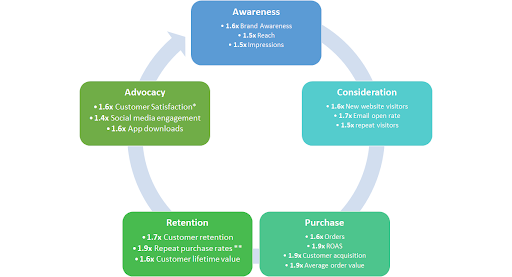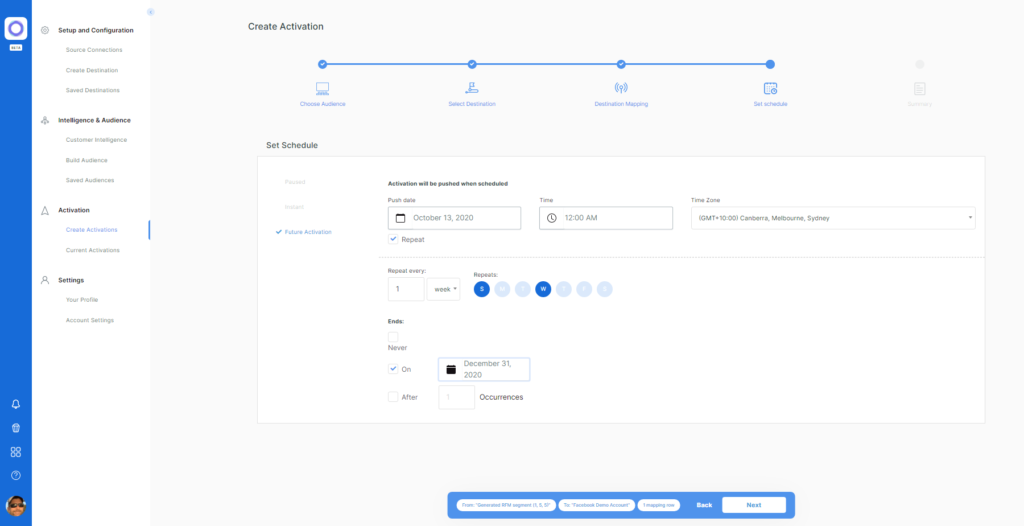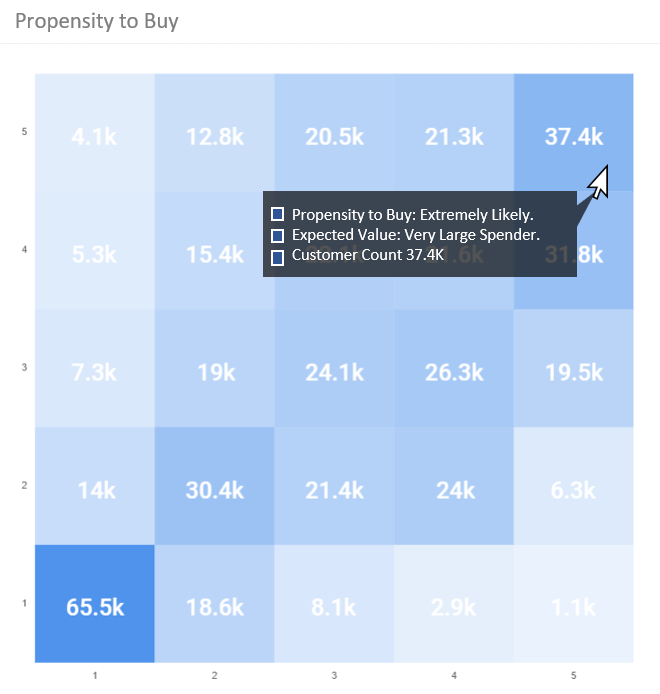When it comes to navigating Google Ads with the new and incoming privacy, browser and regulation changes, Google developed their Customer Match tool to help bridge the gap, enabling organisations to better leverage their 1st party data for advertising campaigns.
In this post, we look at how Google Customer Match benefits marketers and advertisers, and how to execute faster, more targeted campaigns securely using a Google CMU Partner like Wondaris.
A quick look at Google Customer Match
Google’s Customer Match is an advertising tool that enables users to create custom segments by utilising their 1st party data of existing customers/audiences. Google matches the 1st party data that you provide against its own user profiles (whilst protecting and disassociating all user information once an audience is created). Advertisers can target known audiences across search, display, video, shopping and Gmail campaigns.
A number of benefits of using Customer Match, including the ability to:
Want to know more? Our parent company, XPON, delved deeper into the benefits of Customer Match in their 2022 article.
Why using a Customer Match Partner leads to simpler, faster customer engagement
On its own, the current process with Google Customer Match is very manual. First, you must segment and download relevant audience 1st party data to format for Google Ads using one of Google’s provided Google Sheet templates. Next, you must then upload and await the matching process to match your customer data to Google Accounts, and then repeat this process with each audience you wish to create.
Having to do this manually, particularly with large volumes of data and/or data silos, is inefficient, and time-consuming; particularly if you are running numerous campaigns to segments of audiences. This is where organisations find the benefits of a Customer Data Platform (CDP) that is also a recognised Google Customer Match Partner to be a huge advantage (check out our recent article for more information about using a CDP to shift from 3rd to 1st party data).
In May last year, Wondaris became an official Google CMU Partner. Wondaris joined a group of endorsed 3rd party providers that are able to upload data via a native integration, thereby mitigating the data security and integrity risks involved with manual data entry processes.
From a useability perspective, the partnership means our clients are able to upload high-value audiences securely through simple and clickable workflows. Specifically, Wondaris allows for the integration of your own unique customer data (both online and offline) from your CRM into Wondaris for segmentation, and then be natively added into Google Ads. Combining the powers of an approved CDP with Google Customer Match makes for a much faster, more efficient process, whilst giving advertisers confidence that they are activating data from all possible sources, in a secure, privacy-compliant way. Together, they give brands and organisations the capability to scale campaigns, achieve greater reach and engagement, and ultimately improve customer experience.
The Wondaris CDP allows you to link all of your business and marketing data sources so you can better understand what’s driving people to your brand and how you can ensure they stay loyal to you long-term. Connect with the Wondaris team today to find out more about the benefits of working with a CDP partner.
Want to try Wondaris? Get in touch.
We all want to grow our customer base and we know how critical it is to understand and track our customer lifetime value (LTV). Many organisations will look to their Customer Relationship Management Tool (CRM) to fulfill this need and maximise insights, but there is a more comprehensive tool out there that can provide a better view of your customers and predict their behaviour - a Customer Data Platform.
Many businesses are currently relying on their CRM to manage all aspects of the consumer life cycle and track how much revenue a customer is generating during the course of their relationship. A good CRM can certainly assist to convert a prospect into a paying customer. However, the limitation here is that the focus is primarily on transactions; there is much more to cultivating a successful and loyal brand relationship with consumers than that moment they convert. If you’re looking for a Customer Success strategy that’s fit for 2022, and the uptake of first-party data, then a CRM is actually insufficient.
Most consumers today zig-zag between a multitude of different channels before forming an opinion and making a purchase. Just one ‘conversion’ could actually be the result of several interactions with a brand’s social media, blogs, product lists, e-commerce site, other aggregate platforms and more. How can brands keep up with these various touchpoints and construct a clear picture of their customers?
A good Customer Data Platform can deliver a unified view of these consumers, and clearly map out the customer’s journey, decision-making process, preferences and needs.
CDP’s looks at the entire consumer relationship to drive better business outcomes. Where CRM derives reports about known customers and prospects collected from limited, known and structured data, a CDP can collect raw and unstructured data on both known and anonymous visitors to build more comprehensive profiles, unlocking so much more sales potential.
With a CDP in your tech stack, your consumer data is comprehensive, centralised, and most importantly, actionable. Machine Learning and Artificial Intelligence models can be run over your data to help quickly and easily identify your customer segments. You can quickly and easily build high-value audiences and activate new opportunities with a simple click. This reduces the load on internal technical and analytical teams and campaigns can go live sooner.
Armed with a variety of indicators and predictive analytics, marketers can better understand where consumers might require additional support and work cleverly to alleviate any pain points during their experience, likely yielding a better ROI.
A Customer Data Platform is an essential tool for any business that truly values offering a high-quality consumer experience and building long-lasting relationships. If you or your company is looking at investing in a Customer Data Platform to drive better business outcomes, be sure to get in touch with the team at Wondaris.
Want to try Wondaris? Get in touch.
Within your company, you may find yourself having conversations with your many varied teams using complex and discipline focussed language. The challenge is aligning the approach of these teams under a Single Customer View to better interpret your customer data.
As they drive traffic to site your digital marketing team may have a more conversion optimisation and content-driven approach to your customers as they interpret customer data through your digital channels. Your data team is perhaps more concerned with customer attributes and their behaviours as they interact with your product.
To help demystify the language used by your individual teams and their approach to customer data, we have broken down exactly what it means when they talk about attribution, analytics, intelligence and audiences.
An attribution model is a set of rules that determines how credit for conversions is assigned to touchpoints in a conversion path while predictive attribution uses past journeys & behaviour to predict which channels and mediums are the best to use for future campaigns.
Attribution is typically media-focused and is used to drive marketing spend decisions. This concept can be applied to any journey that can be measured in steps with data.
Digital analytics is the practice of measuring, monitoring and analysing performance across digital assets and marketing platforms and how they affect your Customer Experience.
Analytics tools typically review the performance of digital assets against established or comparative benchmarks. These metrics measured do not need to be transactional driven and are often used to maximise the effectiveness of a platform or website.
Customer insight is an interpretation of trends in human behaviours. It aims to increase the effectiveness of a product or service for the consumer to uncover more customer value.
Insights can be used to shape the way communication is planned and structured to best resonate with customers. These insights provide a picture of who (psychographics) the customer is and as a general rule should always be actionable.
Behaviours can cross both Demographic and Psychographic attributes and are strong indicators of future actions.
As the digital environment changes so does the language used to assess and interpret this landscape. Therefore, the complexity and sophistication of the digital landscape are constantly evolving. This means the challenge has been the same for many years and will remain the same for many more to come.
How do I better understand my customers? How do they interact with my business to better engage them? This is a common challenge for every team in any business.
At Wondaris, helping amalgamate this customer data into a Single Customer View is part of our mission. If you or your company is looking at investing in a Customer Data Platform to drive better business outcomes, be sure to get in touch with the team at Wondaris.
The experience economy is driven by a need to compete in a global economy where products and services are rapidly being commoditised by shifting consumer attitudes, technology and the ease of access to competitors within the digital marketplace.
In an experience economy, your competitive advantage comes from your ability to deliver a superior experience for your target audience. It relies on creating a personalised and memorable experience that connects with individual consumers on an emotional level.
Don’t be fooled into thinking that this is just another way of saying customer service; it’s not!
Customer Service is the speed at which you answer a question. Customer Experience is how you deliver it and how you make the consumer feel while doing so.
Customer Experience is also not derived from a single interaction or department but rather the accumulated experience from every touchpoint and channel the consumer has with the business and its marketing.
Getting it right is hard, and the stakes are high, In fact, according to a recent study* consumers say that how a brand makes them feel is 1.5 times more important than any other factor in their buying decision.
However, unlike delivering a good product or service, a good experience is highly subjective and ultimately very personal.
To be successful organisations need the ability to deliver personalised experiences at scale and that requires an investment of time, energy and technology.
Like all big organisational change, embracing this new reality and making the shift toward an experience-driven business has its challenges.
However, for those that do make the change, the dividends are clear.
In a recent Forrester survey**, they found that Experience-Driven businesses significantly outperform non-experience-driven businesses and achieve superior results across the entire customer life cycle.

Continued improvements and access to advanced analytics, attribution, AI and Machine learning allow businesses to process vast amounts of data and gain insights into customer’s personal preferences and needs. New technology has made it possible to capture, understand and engage with your target audience and customers in near realtime.
Harnessed properly these solutions can provide the capabilities to deliver personalised interactions across omnichannel campaigns.
But there is no single solution to provide exceptional experiences and wining in an experience economy requires more than technology; it requires the entire organisation to embrace the experience mindset.
There is, however, a single truth that exists for all experience-driven businesses. Everything starts with understanding your customer.
* A Forrester Consulting Thought Leadership Paper Commissioned By FocusVision June 2019 - How Customers Think, Feel, And Act: The Paradigm Of Business Outcomes Small Data Collection And Analysis
**Source: Forrester Consulting on behalf of Adobe, February 2018
Releasing the value of an audience means activating and targeting that audience at the right time, right place and with the right message.
Understanding how an audience has been built, and the common behaviours and attributes that bond the individuals within it, can help shape the right messaging to engage them. Getting that message to them at the right time and place requires the reach and targeting capabilities of multiple advertising and communication platforms.
“Data in isolation does not represent value. Value is realised only once it is actioned.”
Advanced targeting solution across many of the larger DSP’s now means that you can utilise audiences from your 1st party data to either target them directly 1-to-1 or use the data to build larger lookalike audiences with greater accuracy and commonality with your existing customers.
This capability varies from one platform to another, however, because of the complexity and time involved in getting the right data on to the different platforms, most businesses don't realise the full value of their data.

Wondaris allows you quickly and easily to push your audiences into any activation platform that can ingest audience / behavioural / or event data. And automate future pushes to ensure you are always using the most current and accurate data.
With an increasing number of destinations already available and the ability to build custom destinations, Wondaris supercharges your existing ecosystem by empowering first-party data.
Not all customers deliver the same value, and its important to understand the value each customer segment can provide to your business.
Identifying high value, loyalty or repeat customers, is an obvious place to start, but these represent a small percentage of your customer base. There are plenty of opportunities to drive growth, reduce the cost of acquisition and improve return on your marketing activity by exploring the less obvious and much larger customer segments within your business.

Using ML (Machine Learning) models such as propensity to purchase is an excellent way of identifying both high and low-value segments. Focusing time and effort on customers who are most likely to purchase, and spend more money with you drives marketing effectiveness and ROI.
Conversely and often overlooked. Creating negative audiences (excluding customers from your marketing efforts/campaigns) from those customers that are unlikely to purchase and even if they do, are likely to be low-value customer also drives marketing effectiveness, ROI, and reduces waste.
Doing this can be time-consuming, and with some of these segments being low-value customer sets. The ability to identify and group customers quickly and easily is essential to ensure you don't waste more time and resources identifying them than they might be worth to your business.
The Wondaris Customer Intelligence dashboard runs a series of Statistical, Machine Learning and Artificial Intelligence models over your data to help quickly and easily identify your customer segments and provides single-click activation of these audiences to multiple activation platforms and surfaces.
"(Required)" indicates required fields